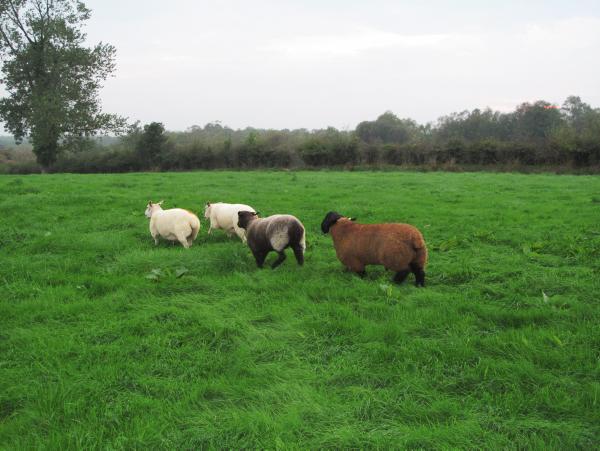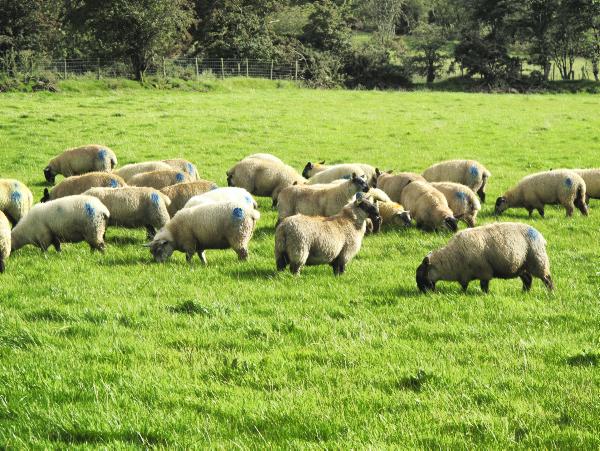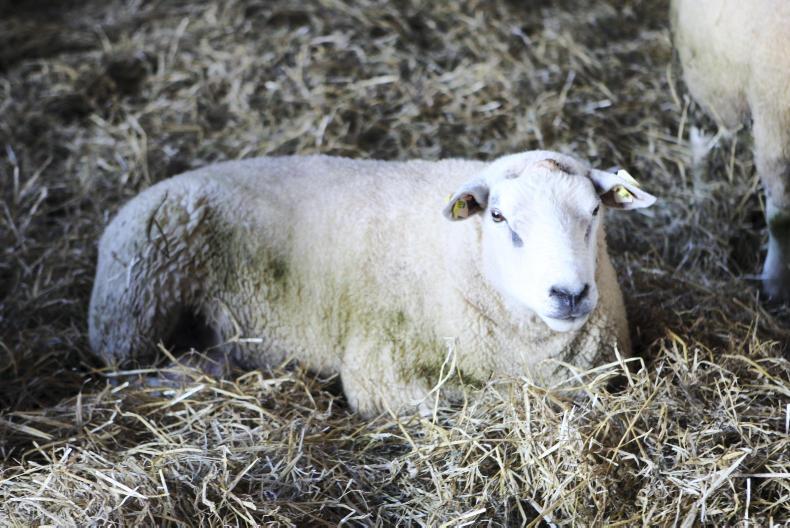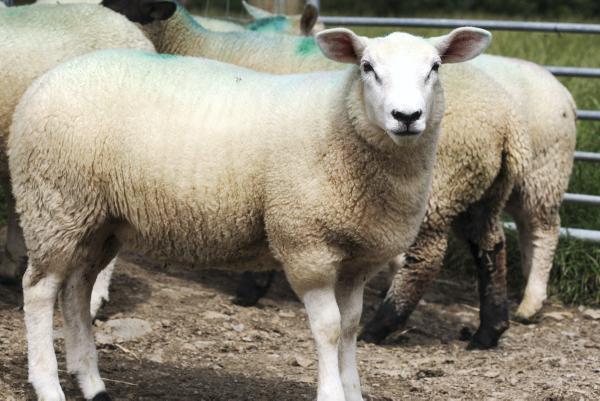While some improvements have been made in recent years, the pedigree ram sales setup remains in a vicious circle.
Commercial flock owners desire rams that are fit and ready to work yet when it comes to the day of sales, rams that are not in comparable condition to the best-looking ones on offer, or presented in their working clothes, frequently attract less demand.
Some producers have made the decision to avoid the show ring.
Repeat custom has confirmed this to be the right decision for them but for most sellers and buyers the tug-of-war between presenting rams in their working clothes or in their best show attire remains.
Getting to a situation where all rams are sold without excessive feeding would be hugely beneficial for the sector with improved breeding performance, identification of breedlines that work best on a grass-based system and improved longevity of sires.

It is buyer demand and preference for rams in their working clothes that will ultimately affect breeders the most and help achieve this goal.
Hopefully, growing interest and participation in the Sheep Ireland LambPlus programme will also continue to give more confidence to buy and sell rams.
This is not to say that appearance should be forgotten, rather that an animal is selected on a combination of looks and genetics.
Acclimatisation period
In the meantime, the best approach to adopt is to identify and purchase the preferred type of ram early so that there is sufficient time for the ram to become acclimatised to its new surroundings.
The longer that a ram can be purchased in advance of the breeding season the better.
At a minimum, a period of three to four weeks is required so that an adequate quarantine period can be put in place.
Where rams have been on a very high plane of nutrition, it will require at least this length of time to switch ram lambs from a high-concentrate diet to a grass-only diet and improve ram fitness pre-breeding.
Maximising the length of time from purchase to breeding allows the option of running a ram with a couple of ewes to see that he is breeding satisfactorily in advance of the main breeding season.
Quarantine procedure
A quarantine procedure should be implemented where any animals are coming on to the farm and especially where breeding rams or ewes/hoggets are being incorporated into the flock.
Where possible, find out as much as you can about the history of the animals. Where no information is available, it is best to assume that animals have no preventative health treatments and pose a risk of introducing disease into your flock. A sample quarantine procedure is listed below.
Worm control
Anthelmintic resistance is a growing problem on Irish farms. The recommended approach is to treat all sheep with moxidectin-based products plus one of the new wormers Zoluix or Startect as quarantine treatment on entry to the farm.

Sheep should be kept off pasture for a period of at least 24 hours and preferably 48 hours. Animals should then be grazed on ‘dirty’ pasture that has recently been grazed with sheep from the farm (likely to have presence of worms).
Lameness
Infectious ailments such as scald, footrot and the growing and serious CODD can quickly spread within a naive flock.
Animals should be footbathed on entry to the farm and again during the quarantine period, with sheep monitored for signs of disease.
Fluke control
Depending on the source of the sheep, liver fluke may be a risk.
Treatment should include sequential dosing with products containing two different active ingredients, for example trichlabendaole and closantel.
Many vets advise against treating breeding rams with a product that also treats rumen fluke ahead of the breeding season as some suggest it may be linked with subsequent lower breeding performance.
Sheep scab
Sheep scab and lice are tricky issues to monitor as animals may not readily show signs until it is too late and they have been incorporated into the flock.
The best form of treatment remains sheep dipping (immersed for 60 seconds for sheep scab).
Some ivermectin products also provide cover but be careful to check if repeat treatment is required seven to 14 days later.
Vaccination
Vaccination use is down to each individual farmer. Clostridial vaccination is highly recommended with younger animals especially at risk or where there are known problems on the farm.
Full immunity requires two vaccinations, with the second administered four to six weeks later.
Toxoplasmosis and chlymadia or enzootic abortion are the two main causes of abortion in Irish sheep flocks.

Young female stock are particularly at risk, with enzootic abortion a cause for concern where animals are bought from a number of sources or unknown history.
Treatments must be administered four weeks before the start of the breeding season.
Read more
Tackling the rising threat of antimicrobial resistance
Steps to growing and utilising more grass
While some improvements have been made in recent years, the pedigree ram sales setup remains in a vicious circle.
Commercial flock owners desire rams that are fit and ready to work yet when it comes to the day of sales, rams that are not in comparable condition to the best-looking ones on offer, or presented in their working clothes, frequently attract less demand.
Some producers have made the decision to avoid the show ring.
Repeat custom has confirmed this to be the right decision for them but for most sellers and buyers the tug-of-war between presenting rams in their working clothes or in their best show attire remains.
Getting to a situation where all rams are sold without excessive feeding would be hugely beneficial for the sector with improved breeding performance, identification of breedlines that work best on a grass-based system and improved longevity of sires.

It is buyer demand and preference for rams in their working clothes that will ultimately affect breeders the most and help achieve this goal.
Hopefully, growing interest and participation in the Sheep Ireland LambPlus programme will also continue to give more confidence to buy and sell rams.
This is not to say that appearance should be forgotten, rather that an animal is selected on a combination of looks and genetics.
Acclimatisation period
In the meantime, the best approach to adopt is to identify and purchase the preferred type of ram early so that there is sufficient time for the ram to become acclimatised to its new surroundings.
The longer that a ram can be purchased in advance of the breeding season the better.
At a minimum, a period of three to four weeks is required so that an adequate quarantine period can be put in place.
Where rams have been on a very high plane of nutrition, it will require at least this length of time to switch ram lambs from a high-concentrate diet to a grass-only diet and improve ram fitness pre-breeding.
Maximising the length of time from purchase to breeding allows the option of running a ram with a couple of ewes to see that he is breeding satisfactorily in advance of the main breeding season.
Quarantine procedure
A quarantine procedure should be implemented where any animals are coming on to the farm and especially where breeding rams or ewes/hoggets are being incorporated into the flock.
Where possible, find out as much as you can about the history of the animals. Where no information is available, it is best to assume that animals have no preventative health treatments and pose a risk of introducing disease into your flock. A sample quarantine procedure is listed below.
Worm control
Anthelmintic resistance is a growing problem on Irish farms. The recommended approach is to treat all sheep with moxidectin-based products plus one of the new wormers Zoluix or Startect as quarantine treatment on entry to the farm.

Sheep should be kept off pasture for a period of at least 24 hours and preferably 48 hours. Animals should then be grazed on ‘dirty’ pasture that has recently been grazed with sheep from the farm (likely to have presence of worms).
Lameness
Infectious ailments such as scald, footrot and the growing and serious CODD can quickly spread within a naive flock.
Animals should be footbathed on entry to the farm and again during the quarantine period, with sheep monitored for signs of disease.
Fluke control
Depending on the source of the sheep, liver fluke may be a risk.
Treatment should include sequential dosing with products containing two different active ingredients, for example trichlabendaole and closantel.
Many vets advise against treating breeding rams with a product that also treats rumen fluke ahead of the breeding season as some suggest it may be linked with subsequent lower breeding performance.
Sheep scab
Sheep scab and lice are tricky issues to monitor as animals may not readily show signs until it is too late and they have been incorporated into the flock.
The best form of treatment remains sheep dipping (immersed for 60 seconds for sheep scab).
Some ivermectin products also provide cover but be careful to check if repeat treatment is required seven to 14 days later.
Vaccination
Vaccination use is down to each individual farmer. Clostridial vaccination is highly recommended with younger animals especially at risk or where there are known problems on the farm.
Full immunity requires two vaccinations, with the second administered four to six weeks later.
Toxoplasmosis and chlymadia or enzootic abortion are the two main causes of abortion in Irish sheep flocks.

Young female stock are particularly at risk, with enzootic abortion a cause for concern where animals are bought from a number of sources or unknown history.
Treatments must be administered four weeks before the start of the breeding season.
Read more
Tackling the rising threat of antimicrobial resistance
Steps to growing and utilising more grass









 This is a subscriber-only article
This is a subscriber-only article








SHARING OPTIONS: